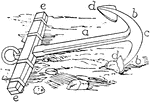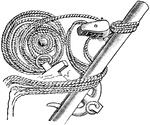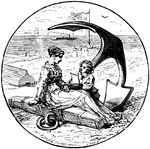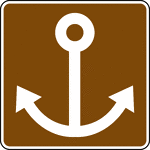Anchors
The Anchors ClipArt gallery provides 26 illustrations of various types of anchors used throughout the ages.

Admiralty's Anchor
"The Admiralty anchor differs only from the ordinary anchor in having a nut, a, worked on the square,…

Anchor
The anchor used by the ancients was for the most part made of iron and its form... resembled that of…

Anchor
"The vertical or supporting beam of the A. is the shank, B; at the upper end of it is the ring, r; and…

Anchor
An anchor is an object, often made out of metal, that is used to attach a ship to the bottom of a body…
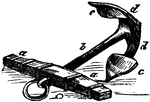
Anchor
An anchor which is an instrument used for retaining a ship in a particular spot. a, a, stock; b, shank;…
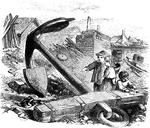
Standing Near an Anchor
Two children are standing near an anchor nearly twice as tall as they are. The anchor is on the shore.…
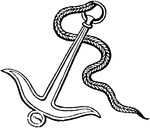
Ancora
"An Anchor. The anchor used by the ancients was for the most part made of iron, and its form resembled…

Bower Anchor
"A, is the cathead; B, the fish davit; C, and E, bollards; D, the bill-board. The anchor is held in…

Cast-iron Mooring Anchor
"Mooring anchors are those which are places in harbours, for the convenience of vessels frequenting…
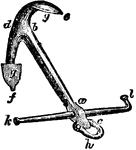
Common Anchor
"The shank is the straight part, ab; the square, ac, is that part of the shank to which the stock and…

Grapnel
"Grapnel. A boat's anchor having from three to six flukes placed at equal distances about the end of…
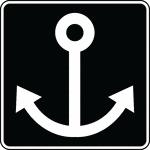
Marine Recreation Area, Black and White
This sign indicates that a marine recreation area is located nearby.
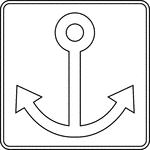
Marine Recreation Area, Outline
This sign indicates that a marine recreation area is located nearby.
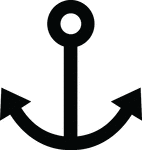
Marine Recreation Area, Silhouette
This sign indicates that a marine recreation area is located nearby.

Martin's Anchor
"The anchor is represented in the position in which it lies on the ground just before taking hold. The…

Mushroom Anchor
"Mushroom anchors, first proposed for ships, are now only used for moorings." — Encyclopedia Britanica,…
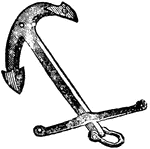
Rodger's Anchor
"The stock is of iron in large as well as small anchors, and is made with a mortice, to fit over the…
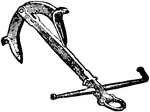
Trotman's Anchor
"The stock is of iron, similar to the Admiralty anchor; the shank is of rectangular section, somewhat…

